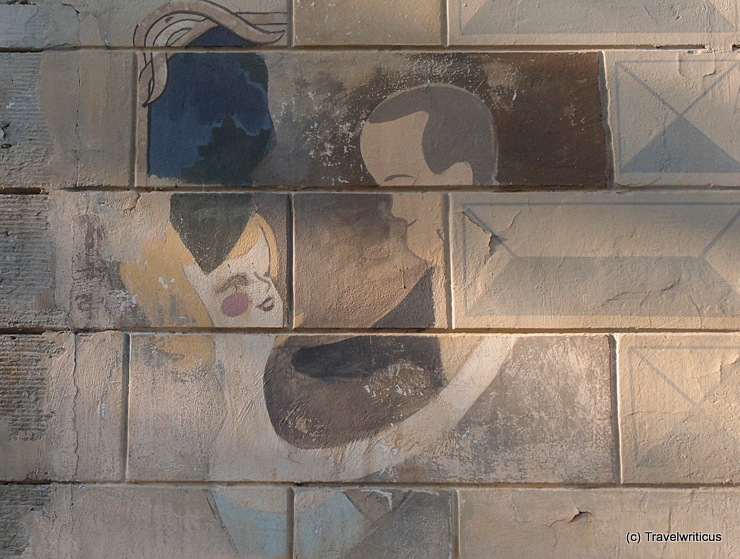
Strollers will find this faded mural of a dancing couple on a classicistic building near the Albertplatz in Dresden. At the time of my visit, it housed a restaurant named “Altes Wettbüro” (Old Betting Office). [German]
You only see what you know (Goethe)

Strollers will find this faded mural of a dancing couple on a classicistic building near the Albertplatz in Dresden. At the time of my visit, it housed a restaurant named “Altes Wettbüro” (Old Betting Office). [German]
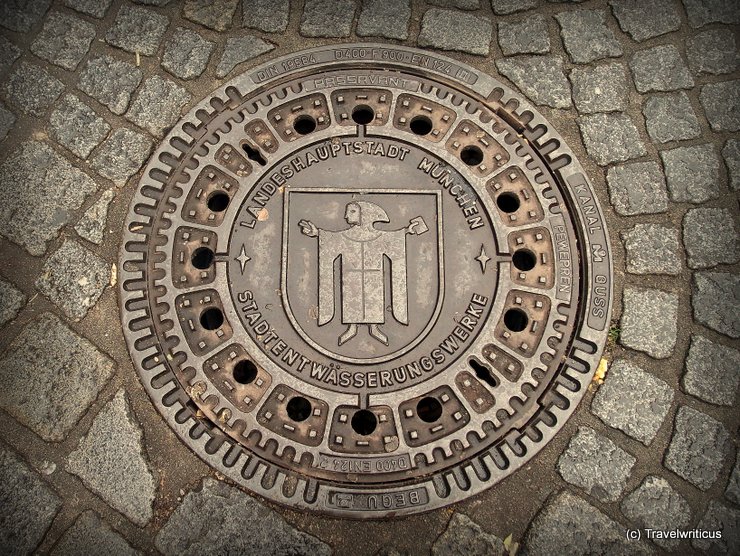
The manhole covers in Munich display the “Münchner Kindl”. It is a character you also see in the city arms. Though in the Bavarian dialect, Münchner Kindl literally means Munich child, the original meaning of the figure was a monk or friar.

The Commandantenhus was built as the administrative seat of the Swedish garrison commander in the years 1748-1751. Together with other historical buildings, it adorns the Alte Markt (Old Market Square) of Stralsund. A striking allusion to its former function is the large coat of arms in its gable field. [German]
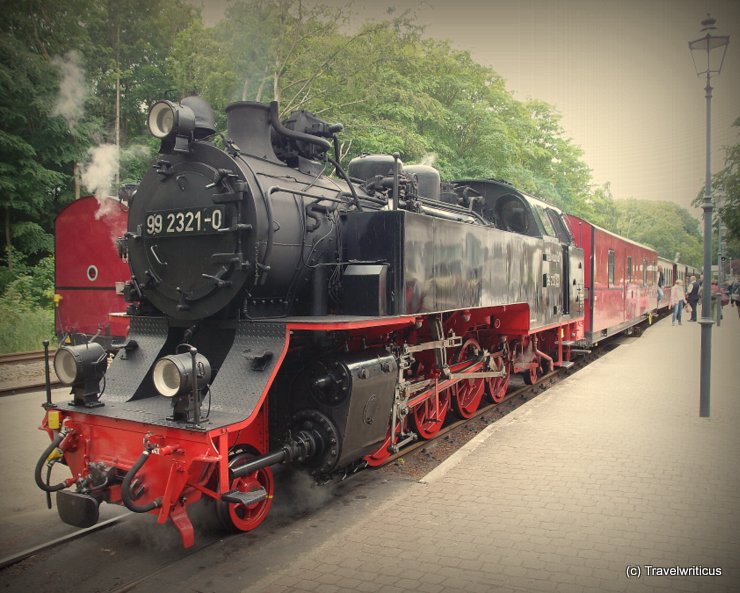
The Mecklenburgische Bäderbahn Molli is a narrow-gauge steam-powered railway in the German state of Mecklenburg-Vorpommern. It connects several seaside resorts along the German coast of the Baltic Sea.
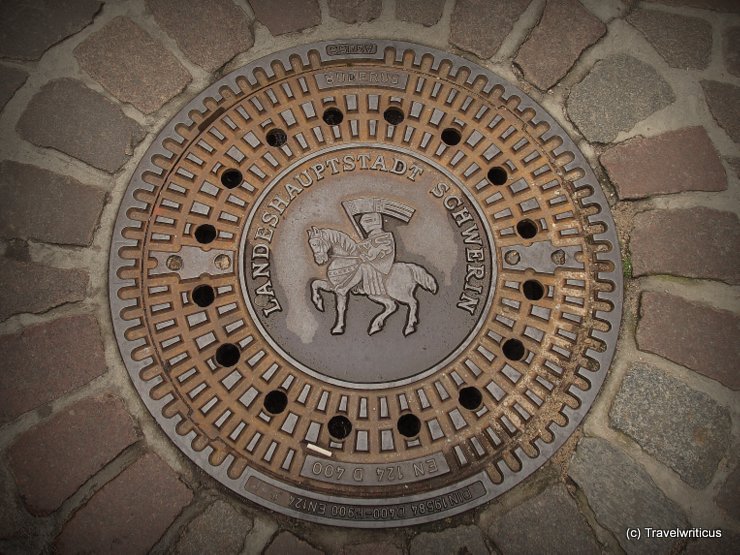
Schwerin is the capital city (Landeshauptstadt) of the German state of Mecklenburg-Vorpommern. The manhole covers in Schwerin show the city arms in the version of 1991. The depicted knight represents Henry the Lion. The flag in his hand is a gonfalon. [German]
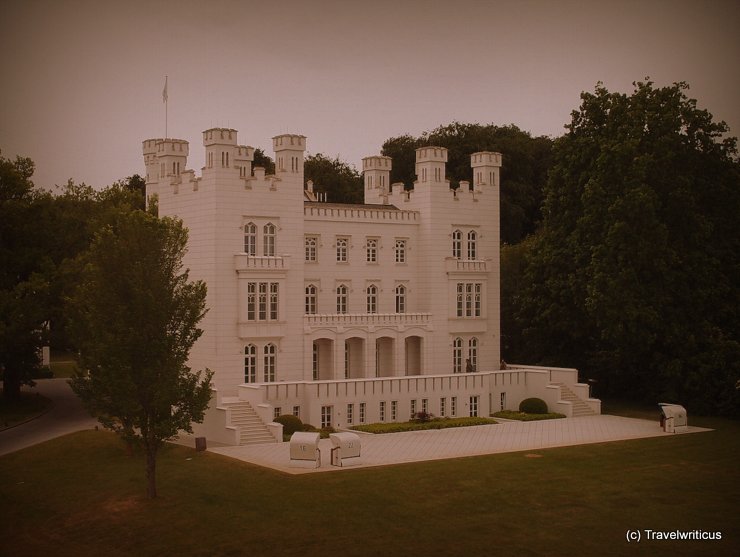
What a Lego®-like castle! But Hohenzollern Castle in Heiligendamm is more a guest residence than a castle. Grand Duke Paul Friedrich commissioned the building to accommodate his noble guests. [German]
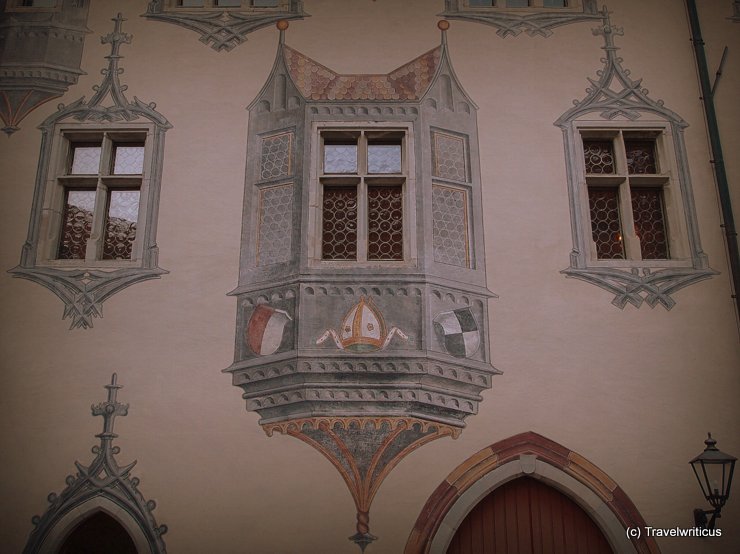
The High Palace (Hohes Schloss) in the Bavarian city of Füssen is known for its Trompe l’oeil architectural paintings. For example, I was impressed by the illusionistic oriel windows. They give the building a surreal touch.
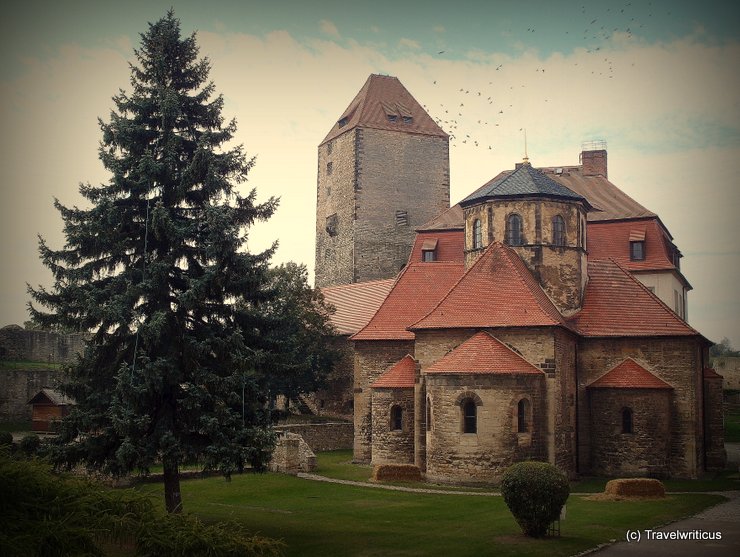
The chapel of Querfurt Castle (Burg Querfurt) in the German state of Saxony-Anhalt dates back to the 12th century. It stands free in the court of the castle. The decoration inside is in Baroque style.
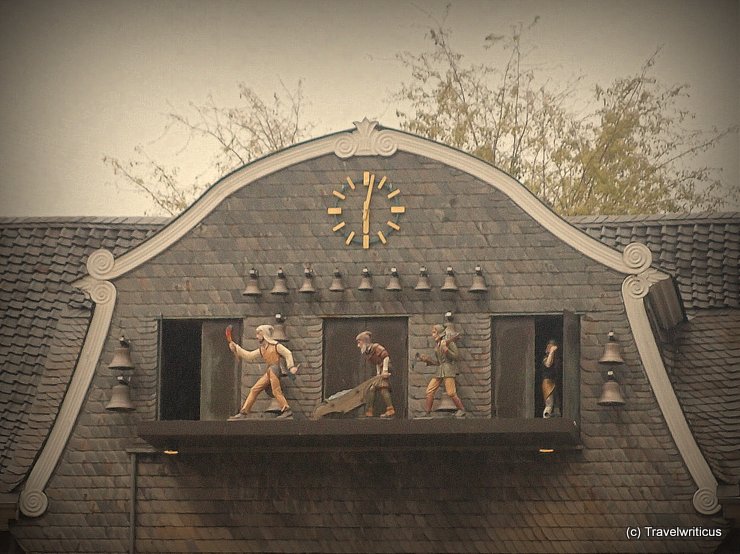
The Glockenspiel at the Kaiserringhaus in Goslar shows miners at work four times a day. In addition, the carillon bells play tunes like the Steigerlied. That way, the Glockenspiel call attention to the nearby Rammelsberg Mine.

I came across this fireless steam locomotive at the Chemnitz Museum of Industry. It used to work in industrial facilities where no open fire was allowed. For example, you could find them in mines, and food or chemical factories.
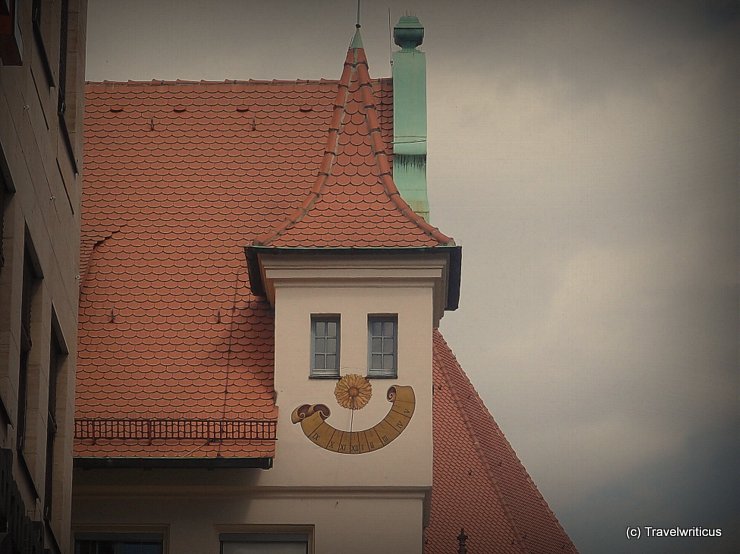
I can’t help myself, but this sundial made me smile! 🙂 I came across this piece while walking along the Sundial Path of Nuremberg. Besides artsy sundials, I also encountered fascinating medieval buildings and informative museums.
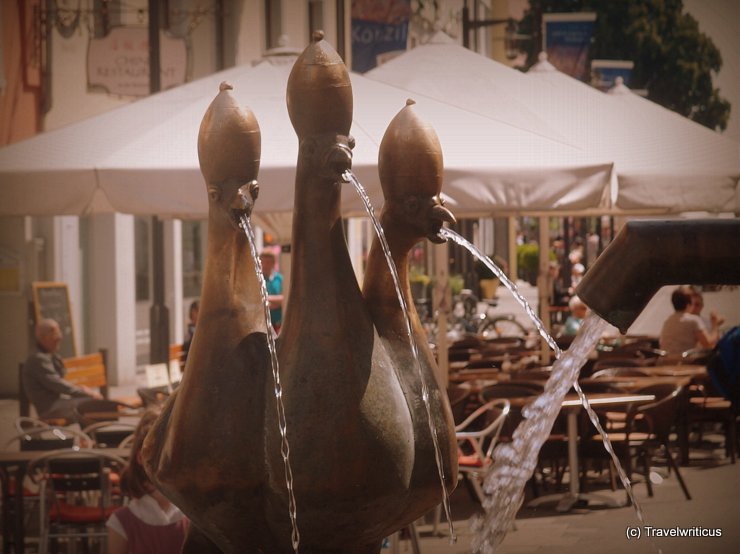
The Kaiserbrunnen (Emperor Fountain) in Konstanz (Constance) was created by sculptor Hans Baur in 1897. After a redecoration by Gernot Rumpf at the end of the 20th century, it refers to historical events related to Constance.